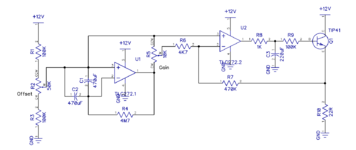edaprojects
Newbie
The attached circuit produces a sub audio frequency, non-repetitive complex waveform. It resembles noise processed through a low pass filter.
Can anyone please tell me what exactly is being detected? In other words, the likely environmental (or other) source of the "signal" detected by the two 470uF caps and being amplified.
Looking at the scope, there is no apparent power grid artifact.
Can anyone please tell me what exactly is being detected? In other words, the likely environmental (or other) source of the "signal" detected by the two 470uF caps and being amplified.
Looking at the scope, there is no apparent power grid artifact.
